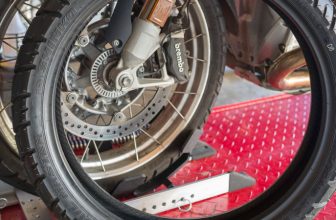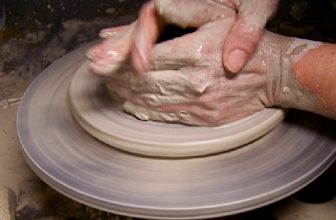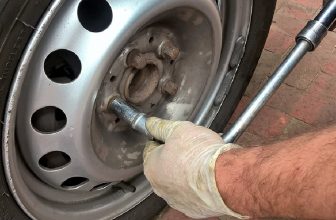How to Use a Walker With Wheels
Using a walker with wheels can be extremely beneficial if you struggle with balance or suffer from any type of mobility impairment. By using a walker with wheels, people may reduce the risk of falls and improve their stability while walking. Walkers also help maintain an upright posture, which is important for good spine health and provides support for those with conditions affecting their balance or strength.

Using a walker with wheels provides several advantages. First, it can help reduce pain and strain on the arms, legs, and joints when repeatedly lifting a traditional walker frame. It also helps you maintain your balance while providing more stability when walking.
The added support reduces the worry of slipping or falling. It is especially great for those with limited mobility or range of motion. In this blog post, You will learn in detail how to use a walker with wheels.
Step-by-Step Processes for How to Use a Walker With Wheels
Step 1: Inspect the Walker
Before you begin using a walker with wheels, it is important to check that the brakes are working properly and that all parts of the frame are stable. Check for any signs of wear and tear or damage that could make it unsafe to use. A walker with wheels should fit your body correctly. To adjust the height, press the buttons on either side of the frame until you find a comfortable level where your arms are slightly bent at your sides when holding the handles.
Step 2: Prepare to Stand Up
Position the walker in front of you with the wheels facing forward. Place your hands on the hand grips, lightly gripping them. Ensure your weight is evenly distributed between both legs and arms before standing up. Gently push off from the floor with your legs and stand up with support from the walker. Make sure that your back is straight, and place one foot in front of the other as you move forward.
Step 3: Move Forward
Using both hands, simultaneously press down on the hand grips while shifting your weight forward onto the balls of your feet. Push down on the walker and move it forward one step at a time, careful not to lose your balance or momentum. Once you have taken a step, re-position the walker so that it is ahead of you before taking another step. Pause with each step and ensure you grip the hand grips firmly before proceeding.

Step 4: Remember to Use Your Arms
The arms should be used to help support your body weight and move the walker forward. Increase strength in your arms by squeezing the hand grips as you move forward. When walking on uneven surfaces, walker users should place their feet in the middle of the wheeled section and shift their weight to each side. This will help keep the walker balanced and allow for smoother movement.
Step 5: Take the Stairs
When taking stairs with a walker with wheels, it is important to remember to go one step at a time. Place your hands securely on the hand grips and press down firmly. Move your foot onto the next stair before beginning to move the walker with wheels in an upward or downward direction.
When turning around, position the walker facing away from you and take a step backward with one foot. Once the heel of your back foot has reached the floor, pivot on your toes and move the walker around in a half circle until you are facing forward again.
Using a walker with wheels can help people who require extra support to be able to move more easily and safely. Following these steps will ensure that you use a walker with wheels in the safest and most effective way.
Tips for How to Use a Walker With Wheels
- Ensure the walker is properly adjusted to fit your height before using it. Adjust the handles so that your elbows are bent slightly when you grip them and your wrists are comfortable and neutral.
- When using a walker, always keep three points of contact with the ground: two hands on the grips and one foot in the rear glider. This will help keep you stable and reduce the risk of falls.
- Ensure all four wheels are securely attached to the walker before using or transporting it.
- Always use caution when pushing, pulling, or lifting a walker with wheels, as it may be top-heavy.
- Always move the walker first, then your feet, to ensure safety when going up and down stairs.
- Be mindful of your speed when using a walker with wheels; too much momentum can make it difficult to control or stop the walker.
- Do not attempt to use a walker with wheels on elevated or uneven surfaces such as grass, gravel, sand, or stairs.
- When using a walker with wheels, always be aware of your surroundings and look for any obstacles in your path that may cause you to trip, stumble, or lose your balance. If necessary, ask for help to maneuver around these obstacles safely.

Using a walker with wheels effectively maintains mobility and independence while reducing the risk of falls.
How Should You Store Your Walker When Not in Use?
When you are not using your walker with wheels, it is important to store it properly. Ensure that the brakes on the wheels of your walker are locked in place, and the folding mechanism is secured. Avoid storing your walker near a heat source, as this can cause damage to its components.
If possible, store your walker in an upright position. This way, it will not take up as much space and will be easier to move when needed. If this is not possible, store your walker folded up and secure the folding mechanism with the provided locking pins or clips. Ensure that any accessories that come with your walker are stored securely in a safe place.
By properly storing your walker when not in use, you can help ensure that it is always ready when needed. Additionally, storing your walker correctly will also help extend its lifetime and keep it working at its best for as long as possible. If you have any questions about how or where to store your walker with wheels, consult the manufacturer’s instructions or reach out to a medical professional for guidance.

How Often Should You Have Your Doctor Check the Fit of Your Walker?
It is important to have your doctor check the fit of your walker with wheels at least once a year. This will ensure that it is comfortable and secure while you are using it. Your doctor can also give advice on how best to adjust the handle height, if necessary, to provide more support and comfort for you as you use it.
Your doctor will also check for any signs of wear and tear on the walker, such as cracks or broken parts. If the walker needs repairs, they can advise you on the best course of action to take. They may even be able to suggest a replacement if needed.
It is important that you use your walker correctly and safely in order to avoid injury. Following your doctor’s advice on a regular basis will help to ensure that you are doing so. Finally, it is also important to have your walker with wheels checked by a professional if you experience any pain while using it.
This could indicate an incorrect fit or even a broken part that needs to be repaired or replaced. Remember, your safety comes first – so always listen to your doctor’s advice when it comes to using a walker with wheels!
How Do You Maintain Your Grip on the Walker to Prevent Falls?
To maintain your grip on the walker with wheels, make sure to keep a firm grip with both hands. You should also remember to keep your elbows slightly bent and close to your body. This will help you stay balanced and prevent falls.
When using the walker, it is important that you always focus on what lies ahead of you so that you can properly assess the terrain. This will help you decide whether it is safe to go down a certain path. Additionally, when using the walker, keep your back straight, as this will help with balance and reduce any falls.

Finally, make sure that your wheels are in good condition and well-oiled so that they do not get too slippery. Stop and adjust the wheels or add some oil if you feel the grip slipping. Following these steps will help you stay balanced while using a walker with wheels and reduce any potential falls.
Overall, it is important to remember that using a walker with wheels can be a safe and effective way of getting around. However, if you do not maintain your grip on the walker or keep track of the terrain ahead, you may put yourself at risk for falls.
How Often Should You Have Your Walker Serviced?
It’s important to remember that walkers with wheels, just like any other piece of medical equipment, need regular maintenance to ensure they continue functioning properly. How often you should have your walker serviced depends on how much use it gets and what type of terrain you traverse.
If you’re using your walker mainly indoors over smooth, flat surfaces, you should probably have it serviced every six months or so. This will ensure that the caster wheels remain free of debris and that all other parts are in proper working order.
Outdoor walkers used on rough terrain may need to be serviced more often. If your walker is exposed to heavy rain, snow, or extreme temperatures, you should have it checked once a month. Additionally, if you’re using your walker for long distances or for extended periods of time, having it serviced more often can be beneficial.

The best way to know when your walker needs service is simply by observing it and checking for any signs of wear or damage. If your walker begins to feel wobbly, squeaky, or unsteady, it’s time for a tune-up.
Conclusion
In conclusion, using a walker with wheels is an easy and safe way to support your body while walking. It helps to reduce the strain on the lower back, legs, and feet and can help you maintain stability and balance.
Before you use a walker with wheels, ensure that it has been properly adjusted according to instructions provided by the manufacturer and that it is appropriate for your size and strength. Before you begin walking, practice with the walker on a flat surface to ensure that it is secure and comfortable. I hope reading this post has helped you learn how to use a walker with wheels. Make sure the safety precautions are carried out in the order listed.




